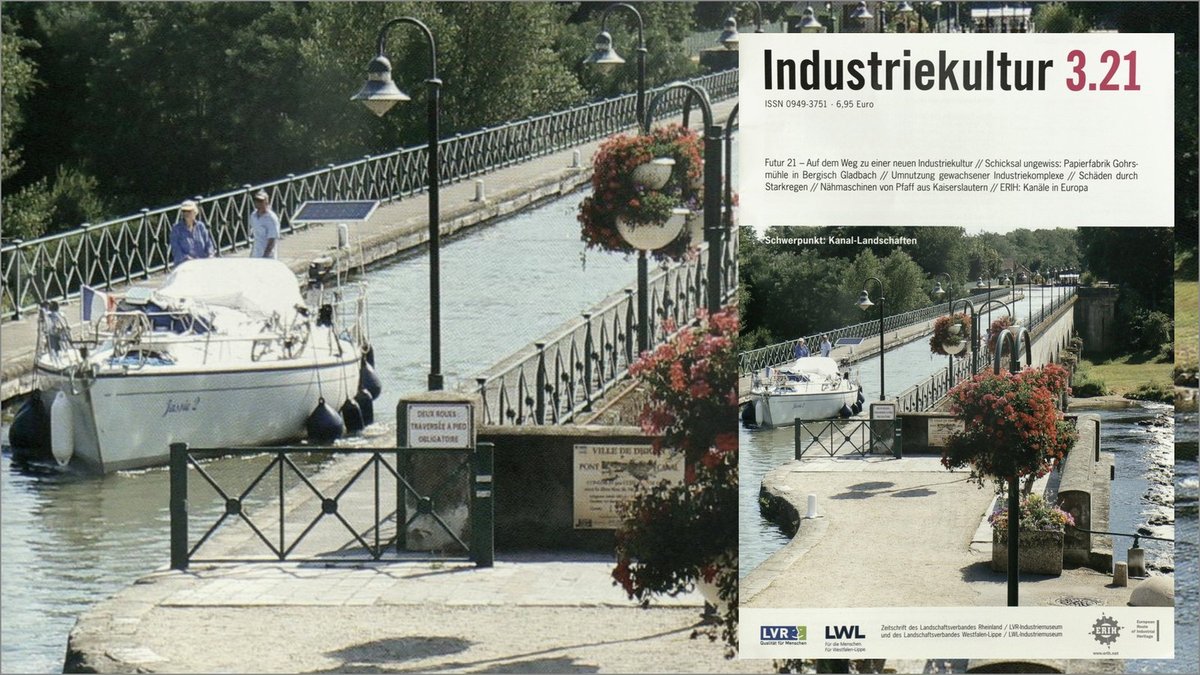
German magazine Industriekultur, No. 3.21: "Canal Landscapes"
Before the advent of the railway, inland waterways were the most important early industrial means of transport for heavy and bulky loads. The lack of sufficient navigable rivers and lakes soon gives birth to an extensive network of canals. But "the significance of a waterway is not limited to hydraulic engineering and economic benefit", reads the latest issue of the journal Industriekultur, suggesting in its essays that "also man-made bodies of water should be perceived as cultural manifestations". This is particularly well illustrated in the article on relevant ERIH sites.
The exciting outline of outstanding examples of historic canals clearly reflects the manifold functions of built waterways from the very beginning. In Great Britain, there is a particular need for the transport of bulk goods, with coal leading the way. This is already evident in the Bridgewater Canal, the first "modern" canal in the motherland of industrialisation. Its developer Francis Egerton (1736-1803), 3rd Duke of Bridgewater, opens it in 1761 to transport coal from his collieries near Worsley to Manchester. The economic and financial success of this new transport route soon inspires plenty of imitators.
In Norway, canals are mainly used for timber rafting. On parts of the 105-kilometre-long Telemark Canal between Dalen and the commercial port of Skien, this kind of operation continues until 2006. The Schwarzenberg Navigation in the Czech Republic, launched in 1791, originally serves the same purpose: to provide cheap transport for timber from the then barely accessible Bohemian Forest to Vienna. The fact that it is hailed by contemporaries to be the "eighth world wonder" illustrates the immense respect for the engineering achievements behind it.
Today, these achievements still attract scores of visitors. Major visitor attractions include the Pontcysyllte Aqueduct in Wrexham, Wales - the tallest and longest aqueduct in Britain since 1805 - and the Barton Swing Aqueduct with its swinging 1.450-ton and 100-metre-long trough that can be rotated a full 90 degrees. Particularly living up to the magazine's title "Canal Landscapes" is the Grand Canal of Ireland, establishing the largest houseboat district in Europe together with the River Shannon, the Erne Lakes and the Shannon-Erne Canal. It owes its current significance in part to the vigorous activists who campaigned for its preservation in the 1970s, thus raising a new interest in the canal's cultural heritage.
I want to go there: canal-related sites
ERIH articel in 'Industriekultur': "Wie Wasser zu wichtigen Wegen wurde. Industriegeschichtlich bedeutsame Kanäle in Europa" (German)

